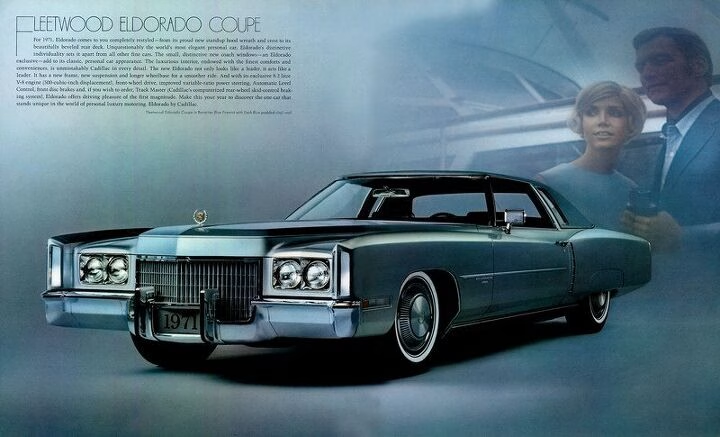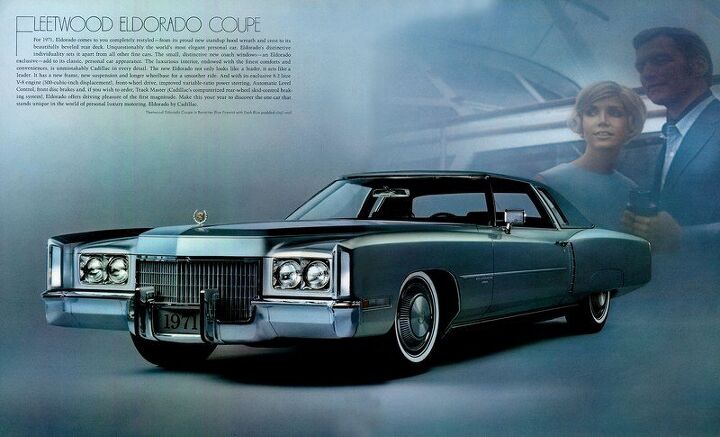Cadillac’s Evolution: A Look at the Eldorado and Its Impact on Luxury Cars
Cadillac has long been synonymous with luxury, and during the 1960s, it truly reigned supreme in the American automotive market. While competitors like Lincoln struggled to keep pace, Cadillac thrived, capturing the hearts of buyers with its elegant designs and impressive performance. However, as the 1970s rolled in, the landscape began to shift, and Cadillac faced new challenges that would ultimately reshape its identity.
What Made Cadillac Stand Out in the 1960s?
Throughout the 1960s, Cadillac’s sales soared as it dominated the luxury car segment. The competition was relatively lackluster, with brands like Imperial and Lincoln offering conservative designs that failed to excite buyers. Cadillac’s bold styling and innovative features made it the go-to choice for those seeking a touch of opulence. The Eldorado, in particular, became a symbol of this era, showcasing the brand’s commitment to luxury and performance.
However, as the decade came to a close, Lincoln began to step up its game. The introduction of the Mark III and a revamped Continental in 1970 provided consumers with viable alternatives to the Eldorado. This marked the beginning of a new chapter for Cadillac, one that would see significant changes in design and quality.
How Did Cadillac’s Design Change in the 1970s?
In 1971, Cadillac underwent a major redesign, introducing revised sheet metal across all models. The new grilles featured a larger egg crate pattern, while the hoods adopted a squarer shape. Unfortunately, this shift in design didn’t resonate well with everyone. The once-proud front corners were rounded off, and the headlamps were separated, resulting in a front end that some critics described as “dopey.”
While the rear fins remained a signature element, they were less pronounced than in previous years, and the overall aesthetic leaned towards a more subdued look. Chrome trim became more abundant, which contrasted sharply with the design ethos established by Bill Mitchell, who had previously championed a more restrained approach.
What Happened to Cadillac Interiors?
The interiors of Cadillac vehicles also saw a decline in quality during this period. Gone were the luxurious materials and elegant designs that had defined the brand. Instead, the dashboards became more angular, and the overall look felt cheaper and less refined. As the disco era took hold, Cadillac leaned into brougham styling, which included flashy patterns and excessive embroidery—elements that some enthusiasts felt detracted from the brand’s luxurious image.
The Calais model, which served as the entry-level Cadillac, reflected this shift. It was stripped of many luxury features, conveying a sense of poverty rather than prestige. With limited badging and simpler wheel covers, the Calais was a far cry from the opulence associated with the Cadillac name.
What Changes Were Made to the Cadillac Lineup?
The 1971 lineup introduced several changes to Cadillac’s offerings. The Calais returned with three body styles, but the unpopular pillared sedan was eliminated. Instead, Cadillac focused on a hardtop four-door and a new standard pillared coupe, catering to more conservative buyers. The DeVille lineup also evolved, with chrome accents and brougham-like trim distinguishing it from the Calais.
Interestingly, the Fleetwood Sixty Special Brougham became the most affordable way to own a Cadillac sedan. This model underwent a transformation, adopting the Brougham name and its accompanying trim, reflecting Cadillac’s understanding of shifting consumer preferences.
How Did Cadillac Adapt to Changing Consumer Demands?
Cadillac’s response to changing consumer demands was evident in its approach to the Eldorado. The 1971 model marked a departure from the previous generation’s hardtop design, opting instead for a traditional pillared coupe. A convertible version was also introduced, allowing Cadillac to cater to customers who desired a more luxurious driving experience.
Despite these changes, the Eldorado faced challenges in standing out against competitors like the Continental Mark III. Cadillac needed to emphasize its technological advancements and unique design features to maintain its edge in the luxury market.
As Cadillac navigated the tumultuous waters of the 1970s, it became clear that the brand was at a crossroads. While it had enjoyed immense success in the previous decade, the new era demanded innovation and adaptability. The Eldorado, with its rich history and evolving design, would play a crucial role in shaping Cadillac’s future.
In the coming installments, we’ll delve deeper into the specifics of the 1971 Eldorado, exploring how Cadillac aimed to differentiate itself in a rapidly changing automotive landscape. The journey of this iconic vehicle reflects not just the evolution of a brand, but also the shifting tastes and expectations of luxury car buyers.


